Member agencies
The Water Utility Climate Alliance (WUCA) comprises 12 of the nation's largest water providers. WUCA members supply drinking water for more than 50 million people throughout the United States.
- Austin Water
- Central Arizona Project
- Denver Water
- Metropolitan Water District of Southern California
- New York City Department of Environmental Protection
- Philadelphia Water Department
- Portland Water Bureau
- San Diego County Water Authority
- San Francisco Public Utilities Commission
- Seattle Public Utilities
- Southern Nevada Water Authority
- Tampa Bay Water
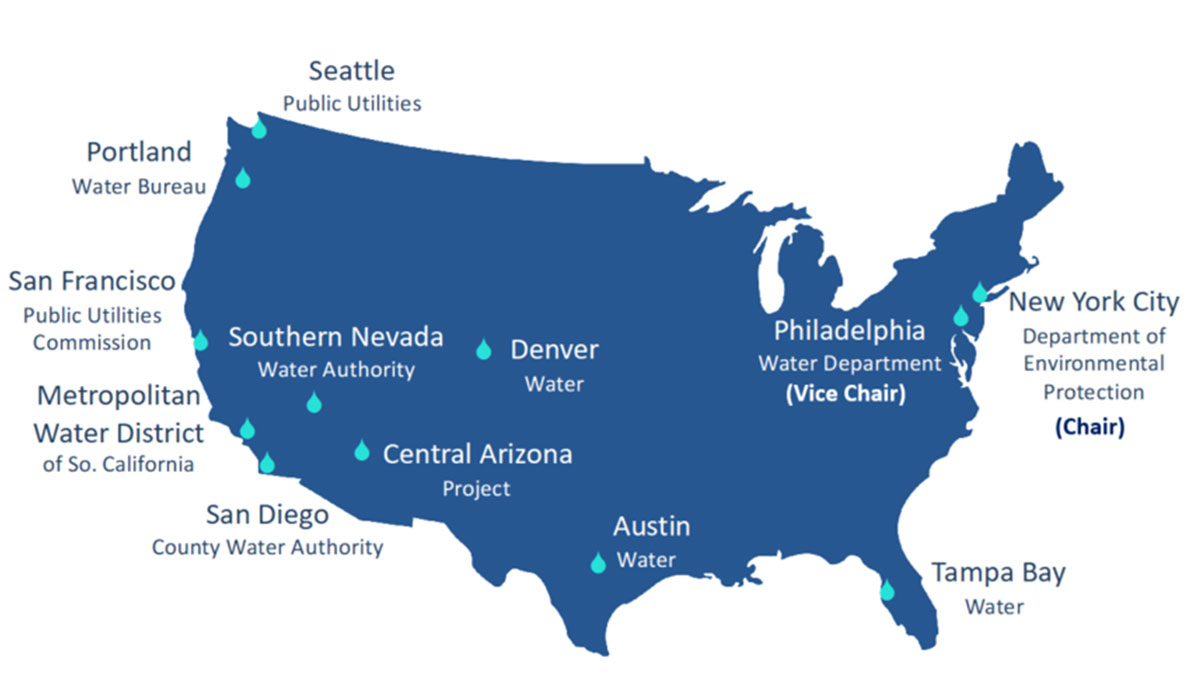

 Austin Water
Austin Water
Location: Austin, TX
Customers served: More than 1 million
Year joined: 2017
Top climate concern(s):
- Drought: Austin's water supply comes from surface water reservoirs on the Colorado River, known as the Highland Lakes (Lakes Travis and Buchanan). During the record drought from 2008-2015, combined storage in these reservoirs reached 32 percent, the second lowest level ever. Regional climate models indicate that although annual average precipitation amounts may not change significantly in the future, there may be longer dry periods and more intense precipitation events.
- Heat: Regional climate models also indicate more days of excessive heat in the summer months. In 2011, Austin experienced a record 90 days of temperatures at or above 100 degrees. Increased heat also means increased evaporation of the lakes. Additionally, it can affect water quality, result in power grid outages that impact operations, and impact machinery and personnel.
- Flooding: Austin has experienced several severe flooding events in recent years. Extreme rainfall can cause damage to critical facilities, including overwhelming wastewater treatments plants, resulting in partially treated effluent being released. Flooding can also increase inflow and infiltration into sanitary sewer systems, resulting in overflows. The drought and flood cycle has occurred throughout much of Central Texas history, including the 2008-2015 drought, which was broken by heavy rains and flooding. This pattern could intensify with climate change.
How the utility is addressing climate change:
Austin Water (AW) takes on climate change through planning, conservation, wildland protection and greenhouse gas (GHG) reduction, including:
- Initiating a process in 2020, to enhance utility resilience to climate threats and develop a utility-scale climate plan that brings together climate adaptation and mitigation strategies.
- Implementing the 2024 Water Forward plan. This 100-year integrated water resources plan, developed through a scenario planning approach, includes strategies that build on Austin's long-standing and highly successful water conservation and reclaimed water programs.
- Prioritizing efforts to enhance equity. In 2021, AW helped develop the city-wide Climate Equity Plan, which aims to equitably reach net-zero community-wide GHG emissions by 2040. AW developed an equity tool to use in Water Forward updates and continues to evaluate ways to improve equitable implementation of its programs.
- Protecting lands for water quality and habitat preservation.
- Improving energy efficiency in utility buildings and operations & reducing greenhouse gas emissions. AW has made operational changes and capital improvements, including installing an onsite 850 KW biogas-fueled generator, which powers AW’s Hornsby Bend Biosolids Management Facility.
Climate change is both a city and a utility priority. AW continues to look for opportunities to strengthen its approaches to prepare for and address it.
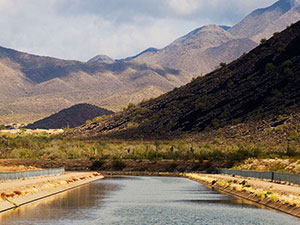
 Central Arizona Project
Central Arizona Project
Location: Phoenix, AZ
Customers served: 5.8 million
Year joined: 2010
Top climate concern(s): Drought in the Colorado River Basin reducing CAP water supply, increased warming impacting CAP infrastructure, operations, and personnel, and extreme weather events posing risks and hazards for CAP infrastructure and personnel
How the utility is addressing climate change:
- Funding research projects that help Central Arizona Project understand the impacts of climate change to better prepare for them (e.g., long-range scenario modeling in the Colorado River Basin).
- Water storage and water banking to offset future water reductions due to drought.
- Water conservation programs that create protection volumes in Lake Mead to delay the onset and mitigate the magnitude of a Colorado River shortage.
- Water augmentation activities such as weather modification and desalination feasibility studies that look to enhance water supply in the system.
- Implementing a climate adaptation plan that comprehensively assessed future vulnerability due to climate change and identified adaptation strategies to address them.
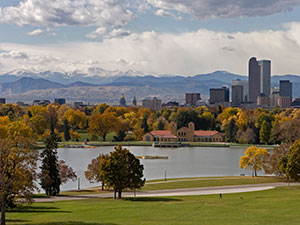
 Denver Water
Denver Water
Location: Denver, Colorado
Customers served: 1.4 million
Year joined: 2007
Top climate concern(s): Drought, wildfire, extreme heat, extreme precipitation, changing snowpacks
How the utility is addressing climate change: Denver Water works to mainstream climate change adaptation into everything they do. They incorporate climate change considerations into organizational plans and educate staff on climate change impacts so that staff are empowered to integrate climate change into their decision-making.
Denver Water's climate team has collaborated with staff in water resource planning, engineering, asset management, finance, watersheds, water quality and treatment, water distribution, and operations and maintenance to educate these programs on climate change impacts and to co-produce adaptation solutions.
In 2020, Denver Water's climate team led a three-day tabletop exercise that brought together four divisions to discuss the impacts of climate change and brainstorm adaptation solutions that are now being piloted. Denver Water also has long-standing climate adaptation approaches, including the From Forests to Faucets partnership that helps mitigate wildfires, as well as continual efforts to increase the robustness and reliability of Denver Water's complex water supply and delivery systems in the face of a changing and uncertain future.
Denver Water's climate team also works extensively with local, regional, and national partners to progress the field of climate change adaptation.
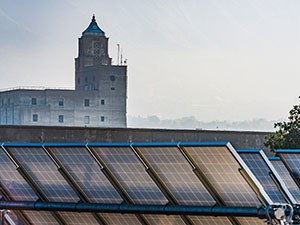
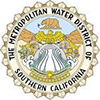 Metropolitan Water District of Southern California
Metropolitan Water District of Southern California
Location: Southern California (headquarters in downtown Los Angeles)
Customers served: 19 million
Year joined: 2007
Top climate concern(s): Loss of Sierra Nevada snowpack; reduction in runoff and river flow in the Colorado River Basin; rising sea levels.
How the utility is addressing climate change: After more than two decades of integrating climate change science into its planning efforts, Metropolitan now monitors the direction of ever-changing impacts from improved global climate models that show the region's vulnerability to longer-term risks. Since 2004, Metropolitan's integrated water resource plans (IRPs) have moved the region towards comprehensive planning and adaptation for climate change impacts. The 2010 and 2015 IRP updates, however, moved to a new level, utilizing a robust decision making approach, which is a comprehensive, technical process that identifies key vulnerabilities associated with climate change and other sources of risk and uncertainty.
In addition to its research and planning initiatives, Metropolitan is a leader in efforts to boost regional water use efficiency, from increasing the availability of incentives for local conservation and recycling projects to supporting conservation best management practices for industry and commercial businesses.
Metropolitan recognizes the importance of greenhouse gas emissions on climate change and has made substantial efforts to implement greenhouse gas mitigation programs and policies for its facilities and operations. These include:
- Exploring water supply/energy relationships and opportunities to increase efficiencies.
- Participating in the California Climate Action Registry.
- Acquiring "green" fleet vehicles and supporting an employee rideshare program.
- Developing solar power in its treatment plants.
- Pursuing development of "green" renewable water and energy programs.

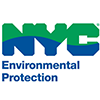 New York City Department of Environmental Protection
New York City Department of Environmental Protection
Location: New York City, NY
Customers served: 8.5 million
Year joined: 2007
Top climate concern(s): Heavy rain, drought, sea level rise
How the utility is addressing climate change: DEP has been preparing for the impacts of climate change by incorporating resiliency into their water, wastewater, and stormwater systems. New York City is at risk from many climate impacts due to its coastal setting and dense urban environment. DEP has made their water and wastewater system more resilient through infrastructure upgrades and partnerships to implement sustainable water management in local communities. DEP has also partnered with other City agencies to develop a Stormwater Resiliency Plan and Cloudburst Program to mitigate rainfall flooding experienced in storms such as Tropical Storm Ida. Additionally, DEP continues to implement its Wastewater Resiliency Program and upgrade utility infrastructure using climate resiliency design standards in preparation for extreme storm events and sea level rise.
DEP is developing a One Water vision for NYC which takes a holistic approach to water management and proposes a long-term vision for managing water resources in the face of climate change and other challenges. This framework will build upon existing efforts to combat extreme precipitation, protect water quality, adapt and upgrade infrastructure, expand water conservation and reuse programs, and ensure equitable allocation of resources. DEP remains dedicated to mitigating climate change impacts and ensuring NYC residents continue to have resilient and reliable water systems for many years to come.
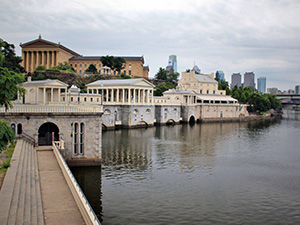
 Philadelphia Water Department
Philadelphia Water Department
Location: Philadelphia, Pennsylvania
Customers served: 1.6 Million (Drinking Water Service) and 2.2 Million (Wastewater and Stormwater Services)
Year joined: 2018
Top climate concern(s):
-
Precipitation increases and extreme storms create more stormwater runoff which can negatively affect source water quality, stress the drainage system, increase flooding, and lead to more combined sewer overflows.
-
Sea level rise coupled with storm surge could increase coastal flooding, inundate critical PWD infrastructure and potentially impact drinking water quality.
- Increases in air temperature, which in turn raise the temperature of Philadelphia's source waters, could create challenges for drinking water treatment and impact aquatic life.
How the utility is addressing climate change:
In 2014, the Philadelphia Water Department (PWD) created the Climate Change Adaptation Program (CCAP) to better understand the impacts that climate change will have on Philadelphia's drinking water, wastewater, and stormwater systems and to develop cost-effective adaptation strategies to address those impacts. Through the CCAP, PWD's adaptation approach consists of multiple strategies including: developing in-house expertise on climate science and risk-based adaptive management approaches to deal with future uncertainty; conducting assessments to better understand climate risks and inform adaptation strategy development; mainstreaming, or incorporating, climate change information in Departmental plans, programs and policies; and, partnering and coordinating with internal and external stakeholders to holistically address climate change.
In 2022, PWD adopted official policy requiring the use of climate-resilient planning and design guidance developed by the CCAP. The guidance provides actionable information and the tools necessary to mainstream climate information in PWD infrastructure planning, design, and decision-making processes. The CCAP is also working with other City departments and stakeholders across the region to assess risks and appropriately scale adaptation solutions.
When it comes to climate mitigation, the Department has a Resource Recovery & Energy Production program, which aims to increase infrastructure resilience and energy independence, reduce costs, and support the City of Philadelphia's Municipal Energy Master Plan. PWD's commitment to increased efficiency and resource recovery will be an important factor in achieving Philadelphia’s citywide greenhouse gas emissions reduction goals.
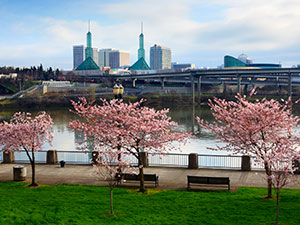
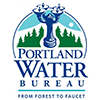 Portland Water Bureau
Portland Water Bureau
Location: Portland, Oregon
Customers served: 995,800
Year joined: 2007
Top climate concern(s): Earlier or longer seasonal reservoir drawdown due to warmer temperature and longer dry seasons; higher risk of turbidity events due to more intense rain storms; increasing water temperature impacts to endangered fish and drinking water quality; extreme heat impacts to outdoor personnel and critical water system infrastructure; and equity implications for marginalized and vulnerable communities in the drinking water service area.
How the utility is addressing climate change: Collaborating with leading regional climate scientists and other WUCA members, the Portland Water Bureau (PWB) has been assessing climate impacts to Portland's drinking water system for more than 20 years. PWB has developed customized modeling and analytical tools for long-term planning purposes and has developed in-house capacity to conduct climate impact assessments. PWB takes an adaptive planning approach to inform long-term water supply planning and climate resilience strategies, largely informed by WUCA's leadership on these approaches. PWB also has established racial equity commitments in its Strategic Plan and embeds equity in its climate and adaptive supply planning work.
A recognized leader in local and regional climate planning efforts, PWB has implemented renewable energy, energy conservation, and fleet efficiency strategies to reduce its organizational carbon emissions, help meet City of Portland climate goals, and avoid future climate costs.
PWB has a Net Zero Strategy and is committed to:
- Achieving net zero carbon emissions by 2050.
- Reducing emissions by 50 percent by 2030 (using 2007 as baseline).
- Integrating meaningful climate analysis into engineering planning and design.
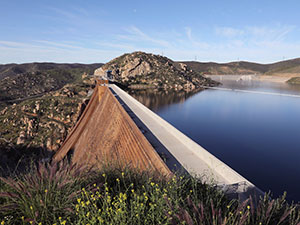
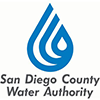 San Diego County Water Authority
San Diego County Water Authority
Location: San Diego County, CA
Customers served: 3.3 million
Year joined: 2007
Top climate concern(s): Drought
How the utility is addressing climate change: The Water Authority recognizes the importance of adapting to climate change and is a leader in sustainability and natural resource stewardship. The 2021-2025 Water Authority Business Plan contains climate change management strategies within the Sustainability Program Focus Area.
The identified climate change management strategies include:
- Implement cost effective opportunities that mitigate greenhouse gas emissions in compliance with emission targets contained in the Climate Action Plan.
- Pursue partnerships on leading edge climate science projects and evaluate opportunities to incorporate climate research into planning processes.
The Water Authority has partnered on several research projects to better understand the uncertainties and impacts associated with climate change on water demand and local water resources in the San Diego region. Participating in a multi-agency project through the Water Research Foundation, the Water Authority collaborated on a study to evaluate potential demand-side impacts of climate change by examining ways to model the effects of climate and weather on water use. A methodological framework was developed to prepare downscaled climate projections and identify specific climate scenarios. Through this effort, an ensemble of case studies was developed to estimate a range of potential demand-side impacts.
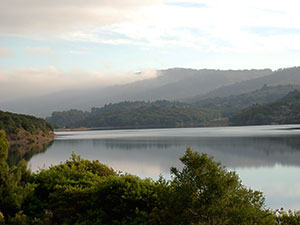
 San Francisco Public Utilities Commission
San Francisco Public Utilities Commission
Location: San Francisco, CA and various watersheds
Customers served: 2.6 million
Year joined: 2007
Top climate concern(s): Drought; sea level rise; snowpack
How the utility is addressing climate change: The San Francisco Public Utilities Commission (SFPUC) has a long history of engagement in local, regional and national forums that develop and promote best practices in assessing and addressing the potential impacts of climate change on water utilities. Within the utility, initiatives have included a sensitivity analysis of the effect of temperature and precipitation scenarios on water supply using a calibrated hydrologic model. As sea level rise is a source of significant vulnerability, the SFPUC led development of a city-wide "Guidance for Incorporating Climate Change into Capital Planning" in 2014. The utility also helps oversee vulnerability planning for city departments and participates in other SLR initiatives.
2017 saw the launch of a multi-year "Long Term Vulnerability Assessment and Adaptation Plan for the SFPUC Water Enterprise," which was designed to:
- Use a "decision scaling" approach to identify multiple sources of vulnerability, including climate change, regulatory changes, population growth, natural hazards and others.
- Assess the associated risks, singly and in combination.
- Examine climate change information from all sources to determine the likelihood of one or more climate futures.

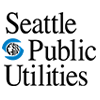 Seattle Public Utilities
Seattle Public Utilities
Location: Seattle, WA
Customers served: 1.5 million
Year joined: 2007
Top climate concern(s): Heavy rain, drought, sea level rise, wildfire
How the utility is addressing climate change: Seattle Public Utilities (SPU) climate change action is guided by the utility's vision: Community Centered, One Water, Zero Waste. SPU has been working to better understand the impacts of a changing climate on the utility’s drinking water, stormwater, and wastewater assets, programs, and service delivery for more than 20 years. The utility is taking an adaptive planning approach to inform long-term water supply planning and climate resilience strategies. Guided in part by WUCA projects, SPU has developed customized modeling and analytical tools for long-term planning and it has incorporated climate resilient infrastructure investments into its strategic business plan.
SPU's climate adaptation focal areas include water conservation, adaptive watershed forest management and wildfire preparedness, nature-based solutions including green stormwater infrastructure and floodplain restoration, future-proofed buildings and facilities, and flexible water supply and instream flow management.
SPU's climate work hinges on collaborative partnerships with regional climate scientists, WUCA member utilities, sister agencies, and community-based organizations, to support cost-effective and equitable adaptation strategies.
SPU is working towards carbon neutral operations, focused on reducing greenhouse gas emissions from SPU’s operations and investing in renewable energy. SPU also facilitates and supports waste prevention—seeding a local circular economy based on reuse and restoration as a strategy to reduce citywide emissions.
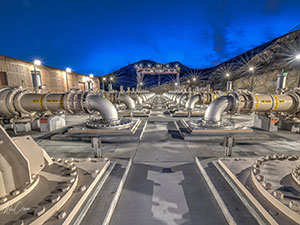
 Southern Nevada Water Authority
Southern Nevada Water Authority
Location: Clark County, NV
Customers served: 2.3 million residents and 40 million visitors annually
Year joined: 2007
Top climate concern(s): Reduced streamflow and declining Lake Mead levels threaten water supply availability and access, while increased temperatures and extreme heat impact workforce, infrastructure, and water demands.
How the utility is addressing climate change: For more than two decades Southern Nevada Water Authority (SNWA) has implemented robust climate adaptation and mitigation actions to ensure a sustainable water future for Southern Nevada. These include:
- Conservation Leadership: SNWA's comprehensive water conservation program is one of the most progressive and effective in the nation. Using monetary incentives, water use restrictions and other tools, Southern Nevada reduced consumptive use of Colorado River supplies by approximately 42 percent since 2002, even as the region’s population grew by more than 52 percent.
- Water Security Investments: Through innovative water banking, storage, and aquifer recharge initiatives, SNWA has stored more than 12 years of water at current water usage rates. SNWA has also invested more than $1 billion to construct critical infrastructure projects, including Intake No. 3 and the Low Lake Level Pumping Station (L3PS), to protect water access during low-reservoir conditions.
- Collaborative Partnerships: SNWA partners with Colorado River stakeholders to store water in Lake Mead which enhances resource flexibility, preserves operations for Lower Basin water users, and improves long-term system sustainability. SNWA has applied lessons learned from efforts with the Water Utility Climate Alliance partnership, such as using multiple scenarios to plan for an uncertain future.
SNWA is also taking action to adapt to extreme heat and lower greenhouse gas emissions. - Combatting Urban Heat: SNWA launched community tree enhancement programs to increase shade and mitigate the urban heat island effect. SNWA's "treebate" program incentivizes additional tree planting as part of a voluntary landscape conversion program and it has added over 1.3 million square feet of tree canopy to date. Additionally, SNWA partners with a local nonprofit to plant 1,000 trees in heat-vulnerable, low-income neighborhoods, investing $500,000 to improve community resilience.
- Reducing Greenhouse Gas Emissions: SNWA actively invests in renewable energy while simultaneously reducing its electricity demands to lower greenhouse gas emissions. When water is saved through water conservation programs, less electricity is needed to pump, treat, and convey water to customers. In 2023 alone, conservation efforts avoided approximately 30,700 metric tons of CO₂e from being released in the atmosphere. SNWA is transitioning to cleaner energy sources, which reduces greenhouse gas emissions. In recent years, SNWA relied on 29 percent renewable energy and is on track to achieve 50 percent renewables by 2030. Renewable resources generate 170 million kilowatt-hours annually.
Moreover, 89 percent of SNWA's vehicle fleet uses alternative fuels, hybrids, or electric power, further reducing carbon emissions.
SNWA collaborates with climate scientists, government agencies, and community stakeholders to address climate risks, developing solutions and strategic investments to enhance Southern Nevada's resilience to climate change.
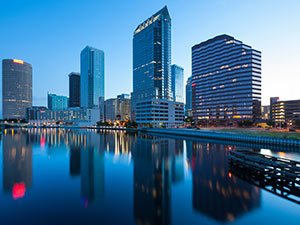
 Tampa Bay Water
Tampa Bay Water
Location: Clearwater, FL (Main Office)
Customers served: Tampa Bay Water and its members together supply water for 2.6 million people
Year joined: 2009
Top climate concern(s): Change in pattern and reduction of river flows; impact of rising temperatures; and rising sea levels/storm flooding
How the utility is addressing climate change: Applied research has been a hallmark of Tampa Bay Water's climate change engagement for over a decade. Working with local, state and national partners, the agency conducts assessments of the risk of climate change on its ability to provide drinking water for its members. In 2010, Tampa Bay Water joined the University of Florida's Water Institute to co-found the Florida Water and Climate Alliance, following the WUCA model. By leveraging staff expertise, along with hydrologic and systems models developed in-house, the agency conducts climate change impact assessments and develops adaptation strategies.
Tampa Bay Water recognizes the importance of conducting impact assessments holistically by engaging local and statewide partners. Current efforts include understanding changes in precipitation amount and patterns on source water availability and timing. It also involves understanding the impact of rising temperature on evapotranspiration and resulting wetland and lake levels that are tied to groundwater use permits.
The agency actively participates in the Florida Water Climate Alliance and the regional Climate Science Advisory Panel, which is working to build a resilient community and plan for sea level rise impacts on the Tampa Bay region's infrastructure. In addition, Tampa Bay Water is leading an effort to increase regional water use efficiency by promoting programs such as Florida-friendly landscaping and by disseminating applied research on efficient outdoor water use.